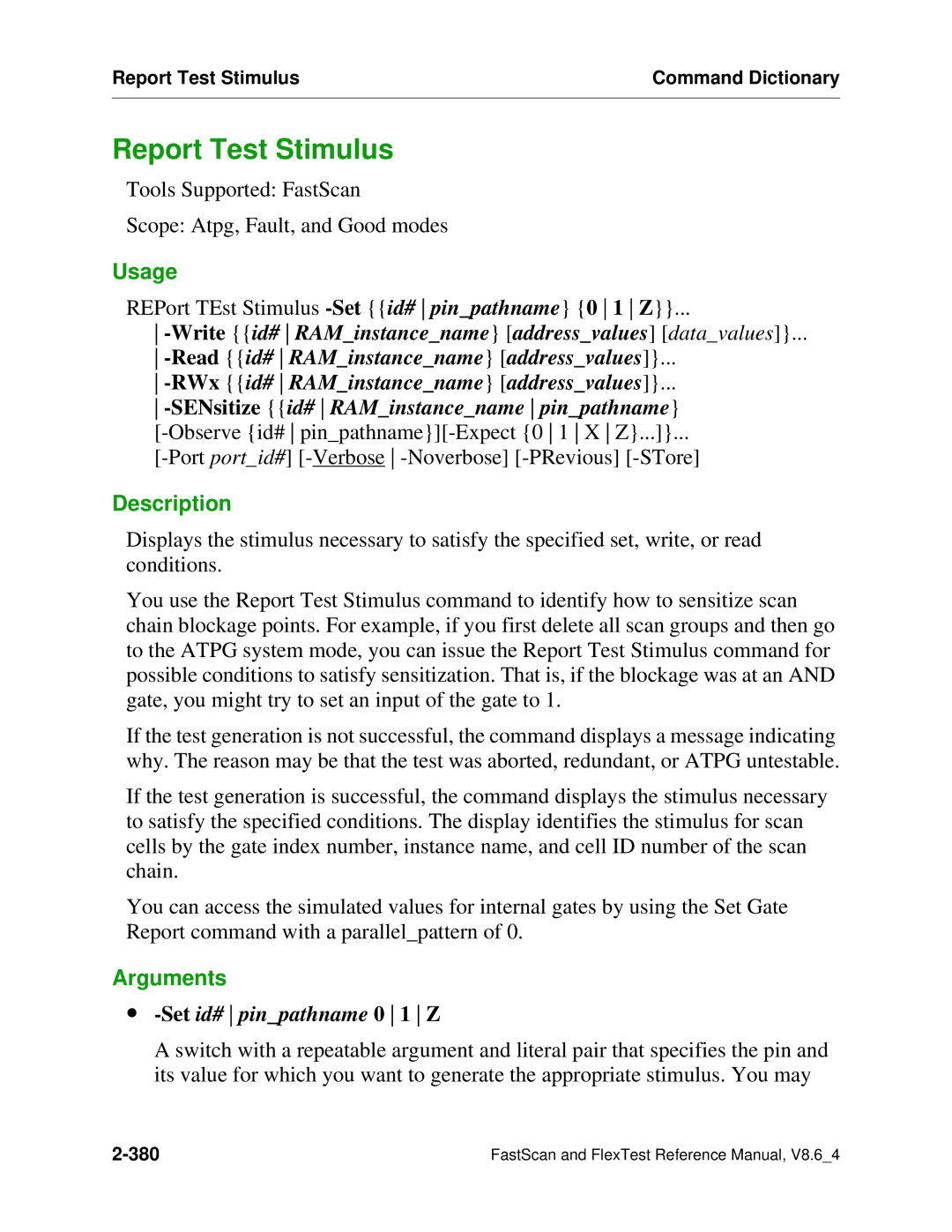Report Test Stimulus | Command Dictionary |
|
|
Report Test Stimulus
Tools Supported: FastScan
Scope: Atpg, Fault, and Good modes
Usage
REPort TEst Stimulus
Description
Displays the stimulus necessary to satisfy the specified set, write, or read conditions.
You use the Report Test Stimulus command to identify how to sensitize scan chain blockage points. For example, if you first delete all scan groups and then go to the ATPG system mode, you can issue the Report Test Stimulus command for possible conditions to satisfy sensitization. That is, if the blockage was at an AND gate, you might try to set an input of the gate to 1.
If the test generation is not successful, the command displays a message indicating why. The reason may be that the test was aborted, redundant, or ATPG untestable.
If the test generation is successful, the command displays the stimulus necessary to satisfy the specified conditions. The display identifies the stimulus for scan cells by the gate index number, instance name, and cell ID number of the scan chain.
You can access the simulated values for internal gates by using the Set Gate Report command with a parallel_pattern of 0.
Arguments
∙-Set id# pin_pathname 0 1 Z
A switch with a repeatable argument and literal pair that specifies the pin and its value for which you want to generate the appropriate stimulus. You may
FastScan and FlexTest Reference Manual, V8.6_4 |
